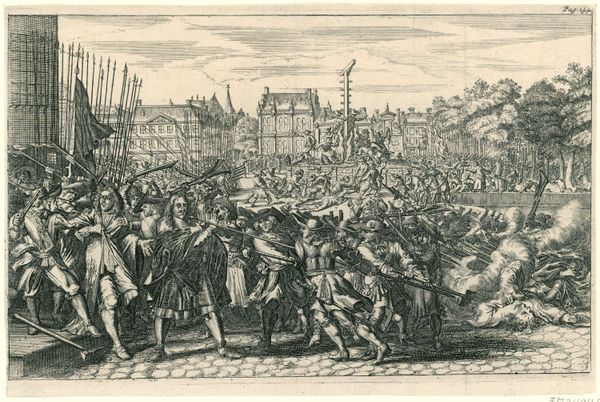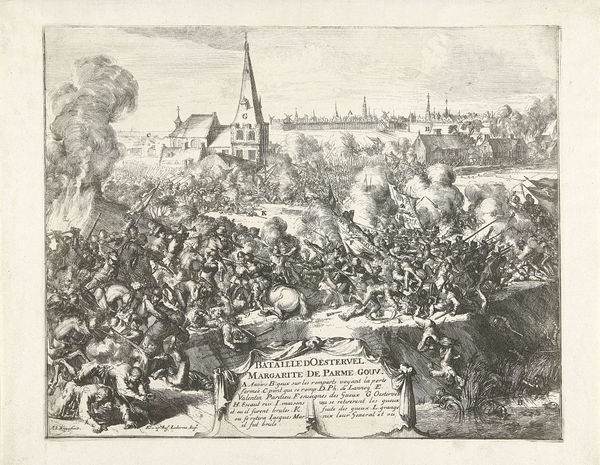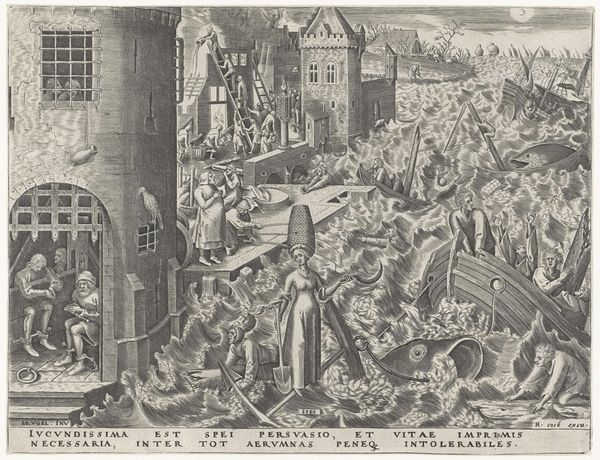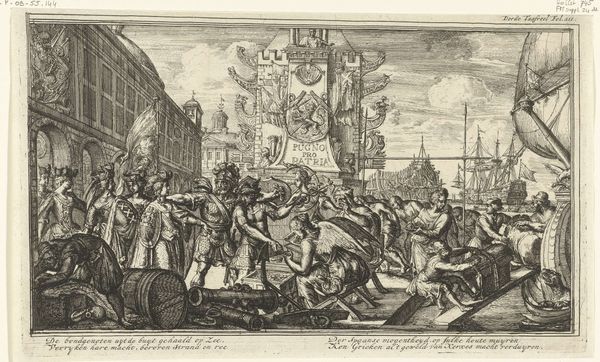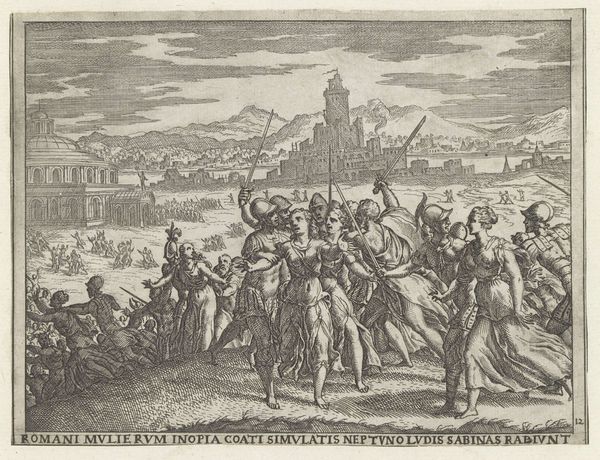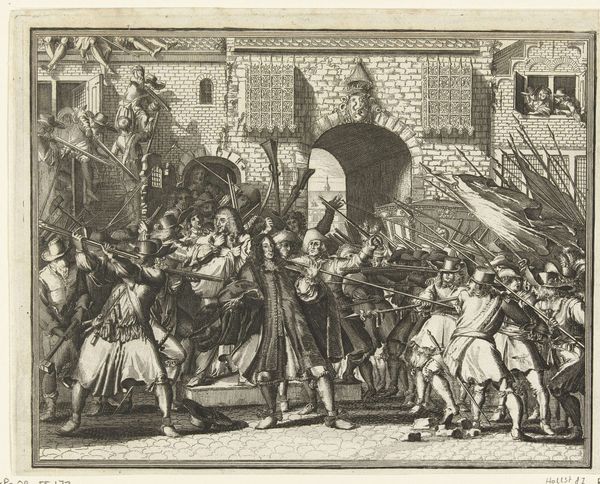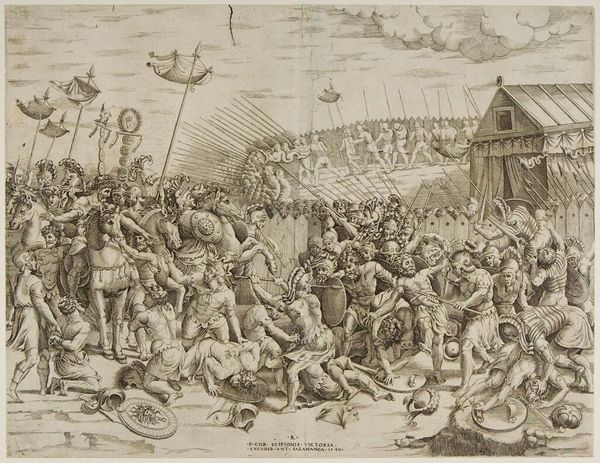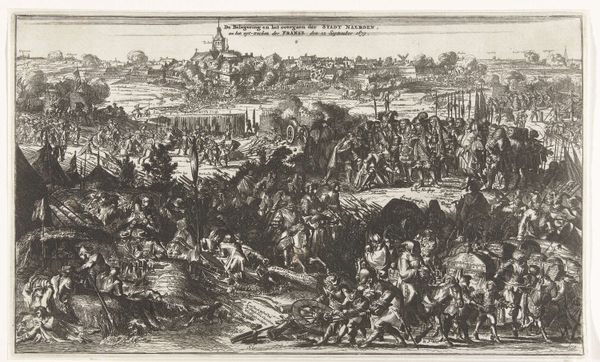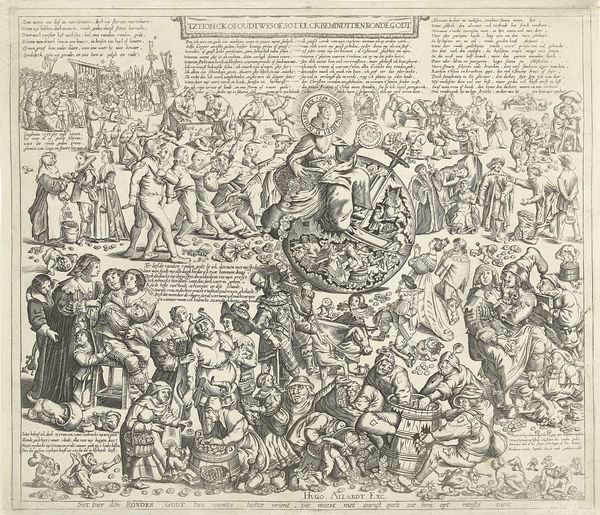
print, engraving
#
narrative-art
#
baroque
#
pen drawing
# print
#
old engraving style
#
cityscape
#
history-painting
#
engraving
Dimensions: height 185 mm, width 303 mm
Copyright: Rijks Museum: Open Domain
Curator: This compelling engraving depicts a grisly historical event, the death of the De Witt brothers. Its attributed to Romeyn de Hooghe and was made between 1672 and 1675. Editor: It’s chaos. I’m immediately struck by the density of figures, all rendered in incredibly fine detail. The texture is overwhelming, almost like a visual scream. It's clearly intended to shock. Curator: Absolutely. It's important to remember the socio-political context. The De Witt brothers, key figures in the Dutch Republic, were lynched by a mob amidst political turmoil. De Hooghe's image wasn't just a depiction; it was a political statement, fueling existing sentiments of that period. Prints like this were readily reproducible, allowing for dissemination of these ideas. Editor: So, thinking about that dissemination… the lines feel deliberately harsh, almost like a woodcut, but we're dealing with an engraving. I am curious about the choice of the material; it gives a sense of raw immediacy, despite the intricacy of the design. Is it commenting on the perceived "coarseness" of the mob and therefore perhaps a criticism? Curator: That's an insightful interpretation. Engravings, especially prints like these, held a powerful position. They were mass-produced. But its craftsmanship offered authority at the same time. It's a balancing act: between affordability for broad distribution and visual precision to persuade public sentiment. Note how the bodies of the De Witts are prominently displayed in the center of the scene, elevated upon what appears to be some kind of platform, becoming a spectacle for all to witness. Editor: That placement makes the brothers the ultimate commodity here, laid bare for public consumption. It draws us, as viewers, into that consumption. The materiality then… it forces the viewer to reckon with not only what happened but also the uncomfortable nature of observation, doesn’t it? Is it art or propaganda? Curator: Indeed. De Hooghe blurs those boundaries, leveraging both the artistic skill and the accessibility of printmaking to shape the narrative. And that's why this artwork, although depicting an awful moment in Dutch history, is also such a valuable piece to study within our collection today. Editor: It is an effective marriage between artistry, material availability, and public outcry, isn't it? It serves as a potent reminder of the power of art to not just document history, but also actively shape it.
Comments
No comments
Be the first to comment and join the conversation on the ultimate creative platform.

